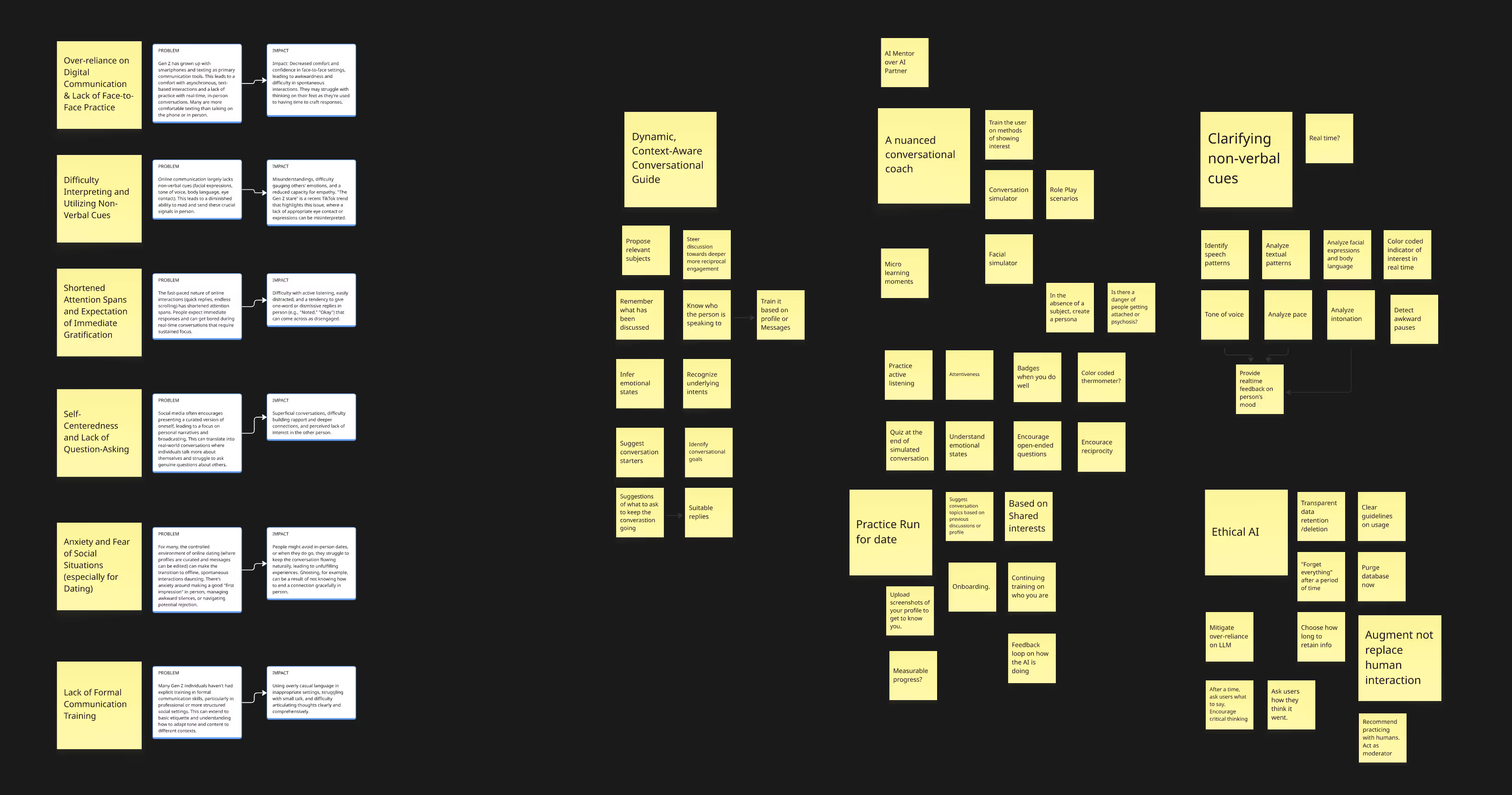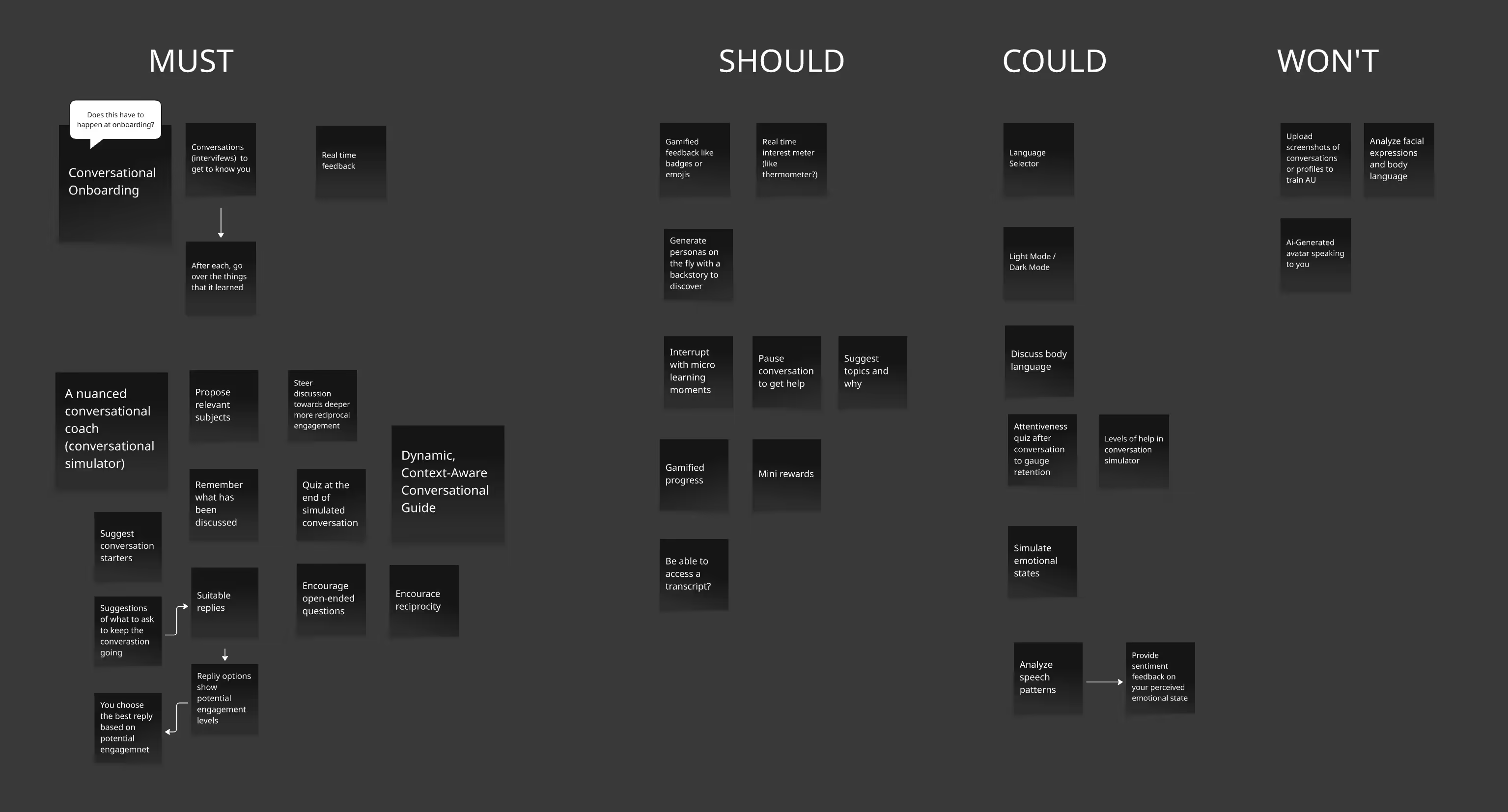Connecting through AI: Solving Conversational Anxiety with Minerva
Role: Concept, Creative Direction, Design
Brand
UX Design
UI Design
AI Integration
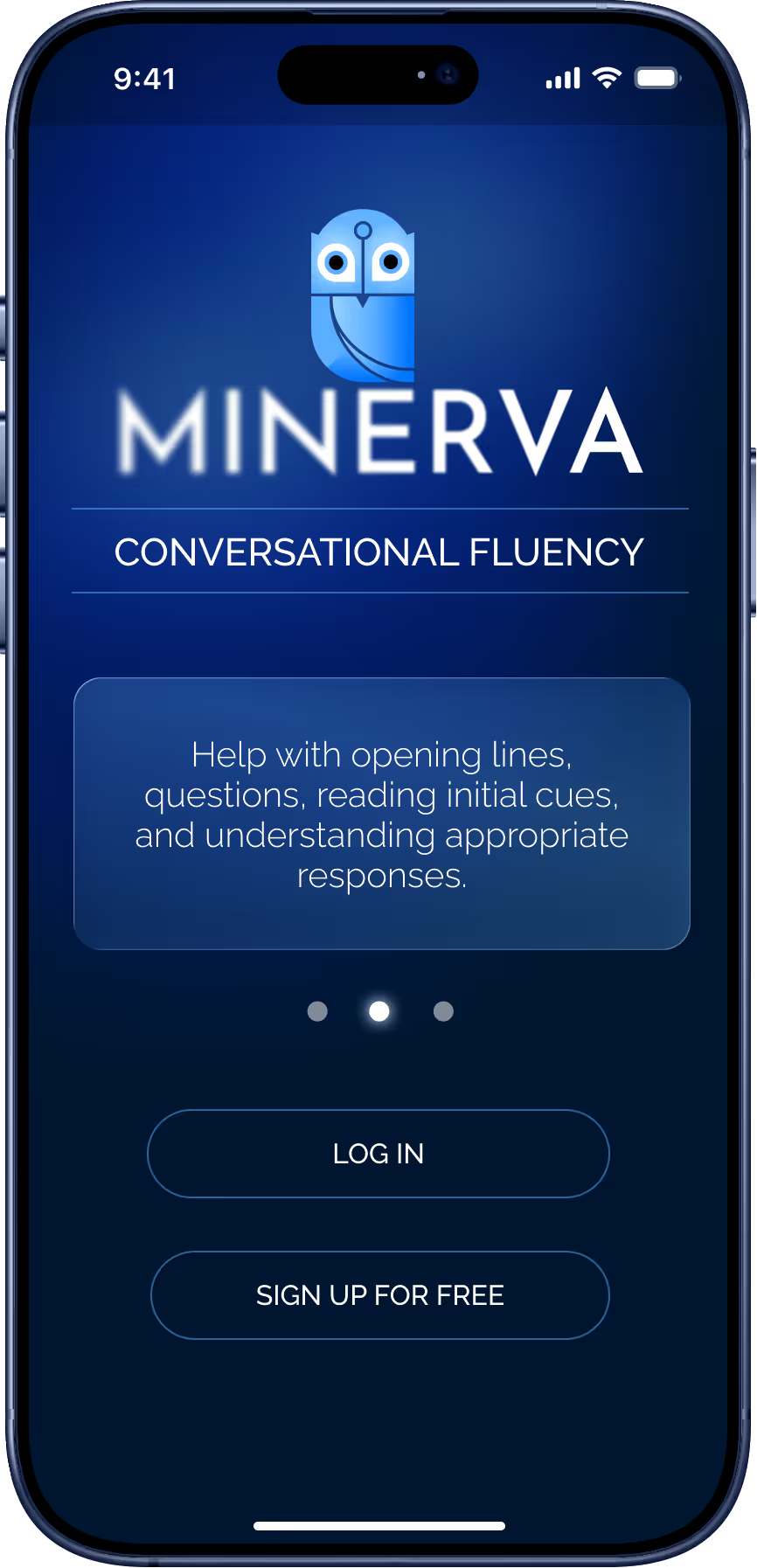
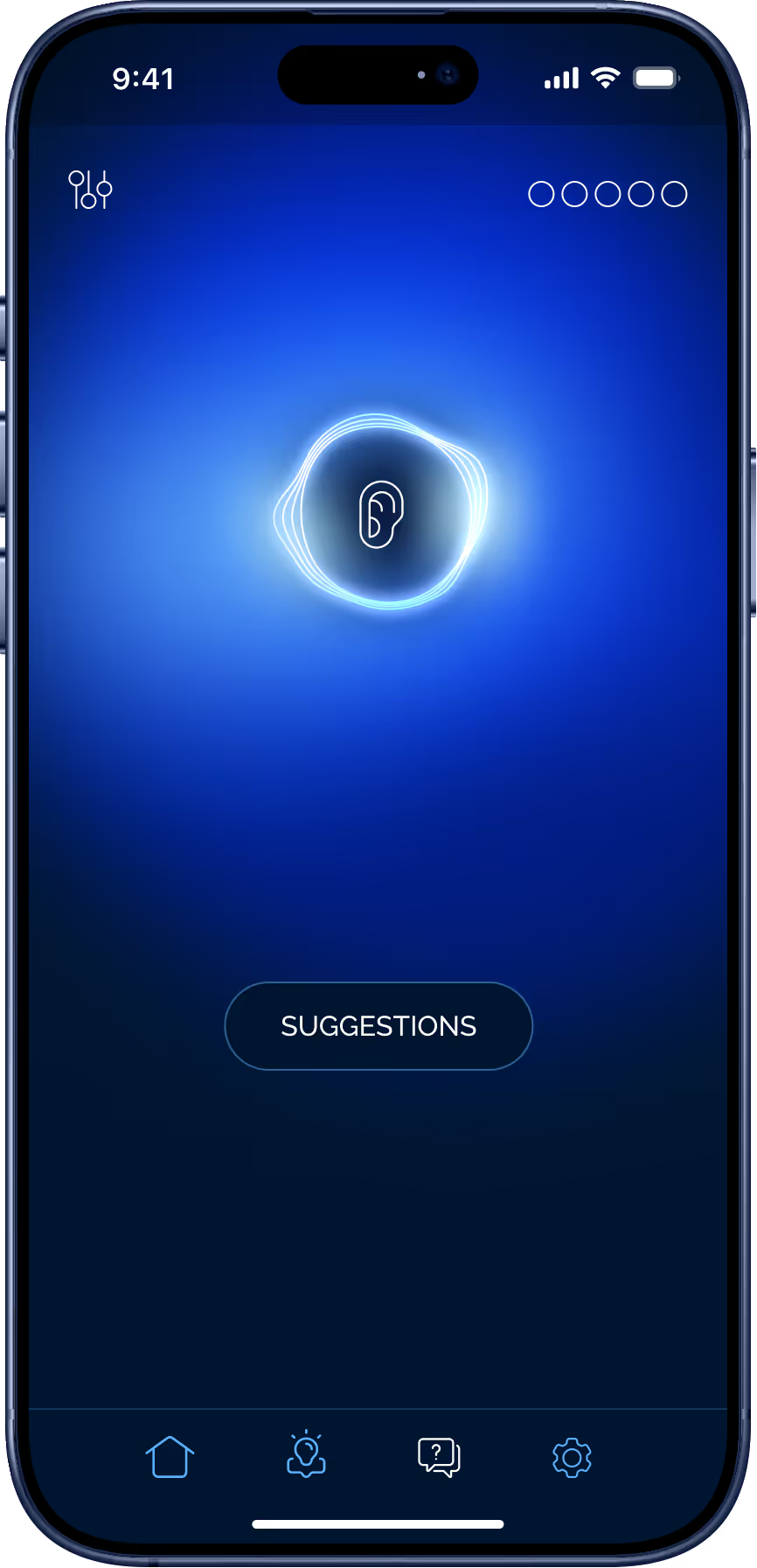
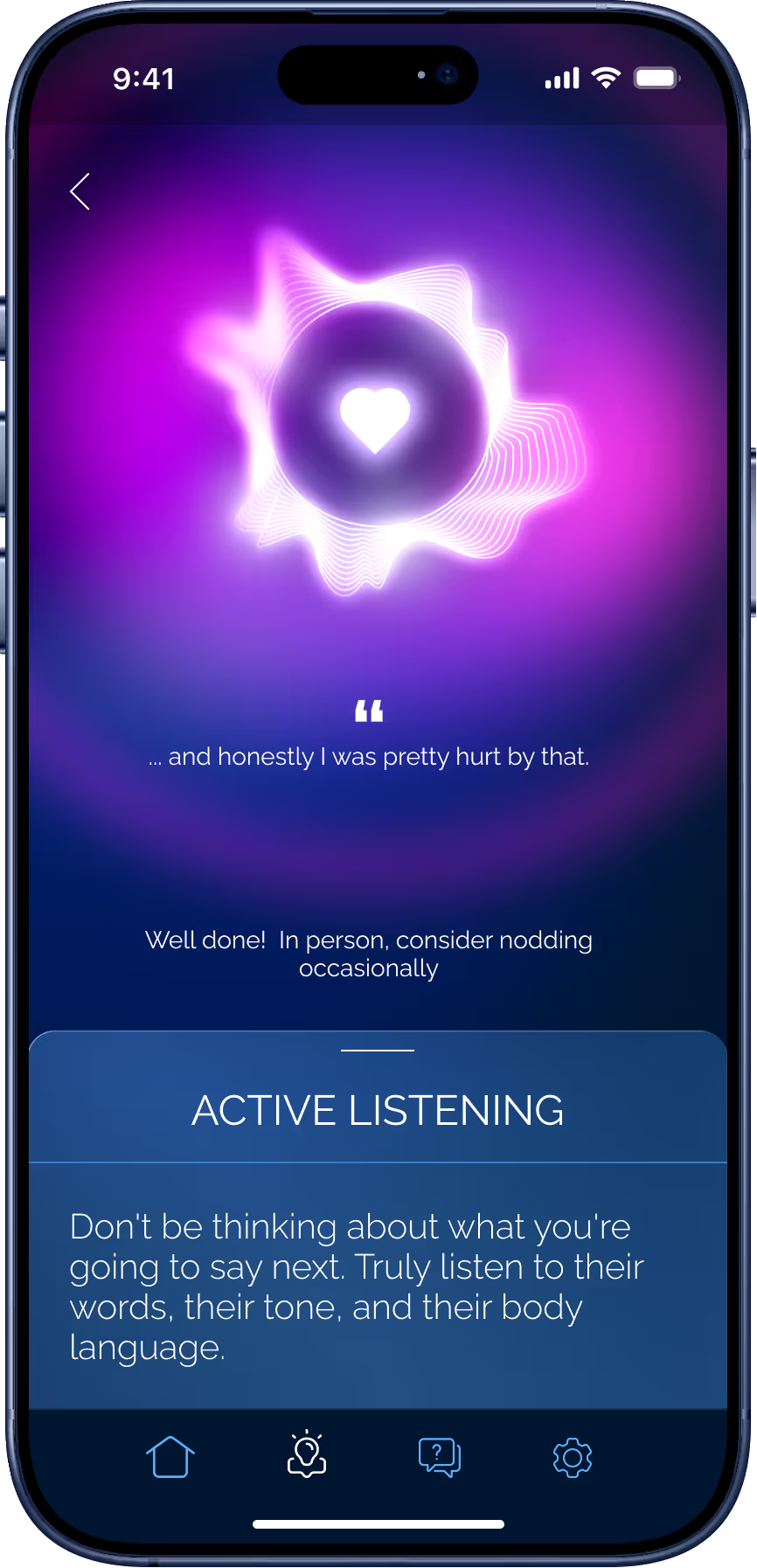
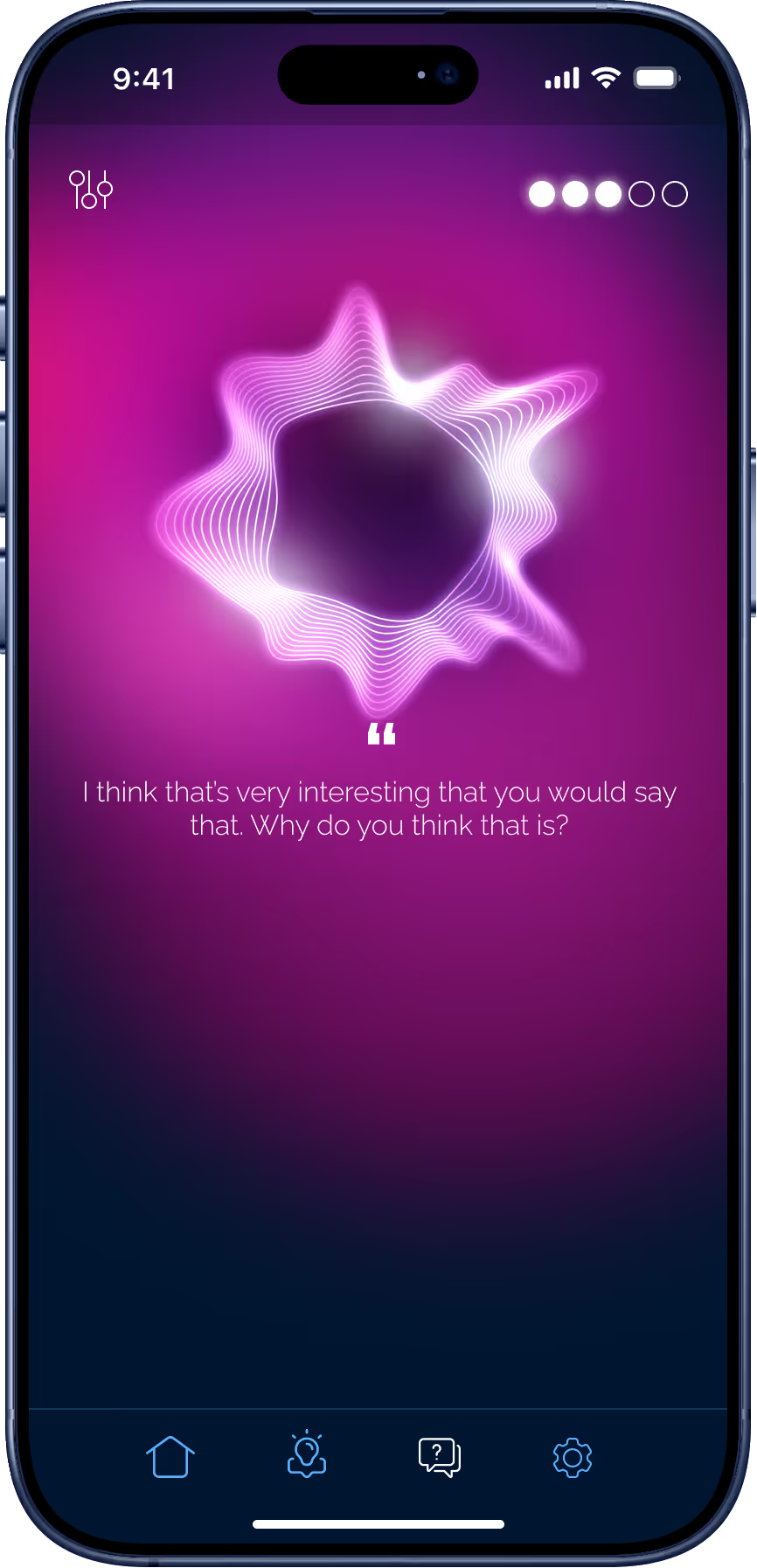
Problem:
We have lost the art of conversation
Gen Z and Millennials face many challenges in interpersonal communication that contribute to increased rates of anxiety and depression.
DIGITAL OVERRELIANCE
Gen Z has grown up with smartphones and texting as primary communication tools. This leads to a comfort with asynchronous, text-based interactions and a lack of practice with real-time, in-person conversations.
LACK OF CURIOSITY
Social media often encourages presenting a curated version of oneself, leading to a focus on personal narratives and broadcasting. This can translate into real-world conversations where individuals talk more about themselves and struggle to ask genuine questions about others.
CONVERSATIONAL ANXIETY
Due to a lack of experience in face-to-face conversations, many Gen-Z individuals experience high anxiety around in-person interactions, favoring online or text-based conversations, further exacerbating the issue.
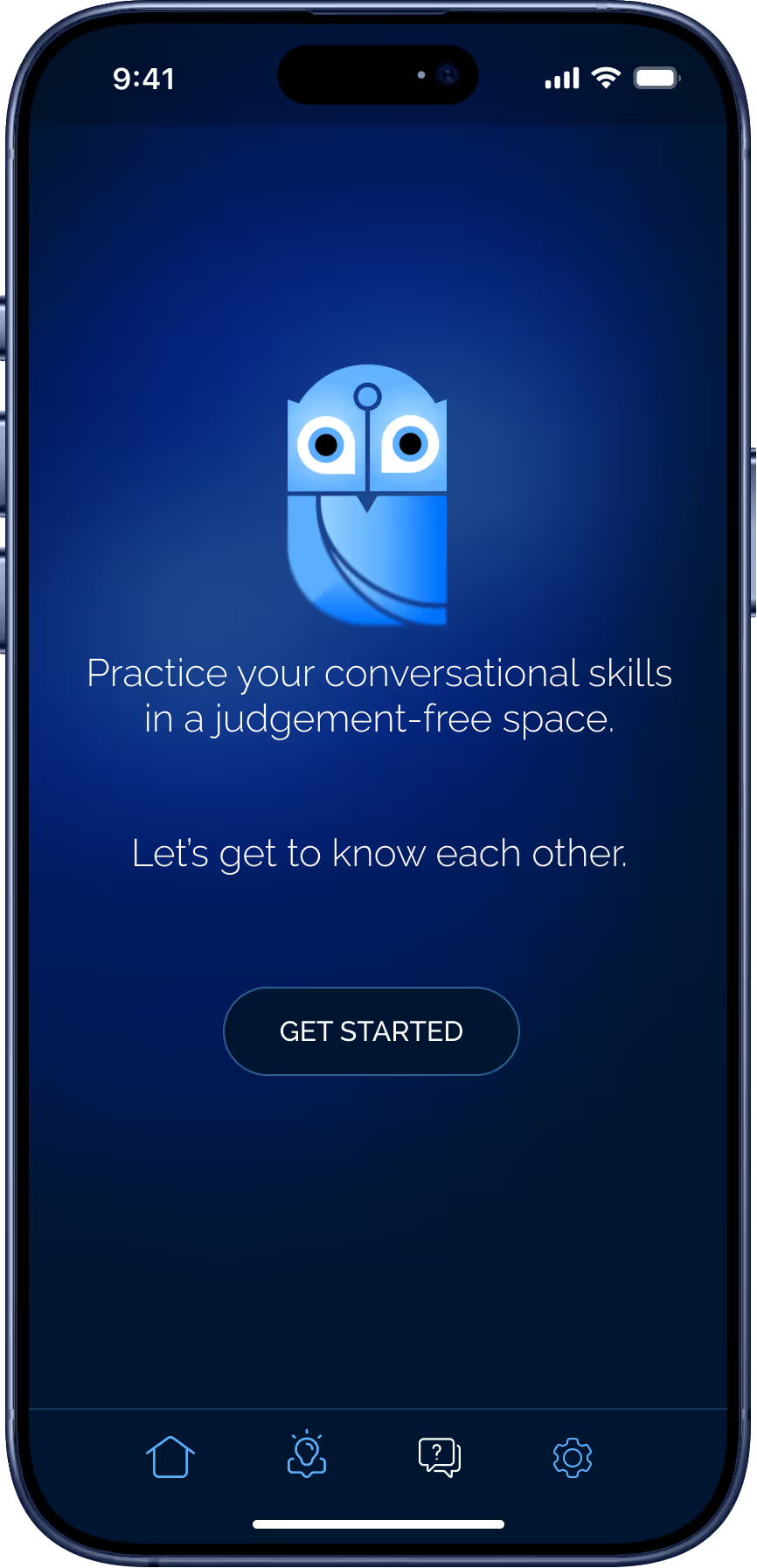
Introducing: Minerva
I came up with a concept for a dynamic mobile application designed to bridge the conversational skills gap prevalent among Gen Z.
This app offers a comprehensive, multi-faceted approach, combining bite-sized educational modules with interactive practice opportunities. Users delve into core conversational techniques such as active listening, asking open-ended questions, effective storytelling, and understanding verbal cues.
Crucially, the app provides simulated conversations with real-time feedback, allowing users to build confidence and translate digital fluency into impactful in-person communication.
Crucially, the app provides simulated conversations with real-time feedback, allowing users to build confidence and translate digital fluency into impactful in-person communication.
It starts with research
52 survey responses via Google Forms using Reddit and Slack channels
65 articles and research papers referenced
Extensive research yielded a 25 page document outlining the issues faced by many Gen-Z and Millennial individuals with regards to conversation. It uncovered a strong desire to connect but a lack of knowledge about where to start or what to do.
I distilled the research into 6 main issues:
1
Over-reliance on Digital Communication & Lack of Face-to-Face Practice
Problem: Gen Z has grown up with smartphones and texting as primary communication tools. This leads to a comfort with asynchronous, text-based interactions and a lack of practice with real-time, in-person conversations. Many are more comfortable texting than talking on the phone or in person.
Impact: Decreased comfort and confidence in face-to-face settings, leading to awkwardness and difficulty in spontaneous interactions. They may struggle with thinking on their feet as they're used to having time to craft responses.
2
Difficulty Interpreting and Utilizing Non-Verbal Cues:
Problem: Online communication largely lacks non-verbal cues (facial expressions, tone of voice, body language, eye contact). This leads to a diminished ability to read and send these crucial signals in person.
Impact: Misunderstandings, difficulty gauging others' emotions, and a reduced capacity for empathy. "The Gen Z stare" is a recent TikTok trend that highlights this issue, where a lack of appropriate eye contact or expressions can be misinterpreted.
3
Shortened Attention Spans and Expectation of Immediate Gratification:
Problem: The fast-paced nature of online interactions (quick replies, endless scrolling) has shortened attention spans. People expect immediate responses and can get bored during real-time conversations that require sustained focus.
Impact: Difficulty with active listening, easily distracted, and a tendency to give one-word or dismissive replies in person (e.g., "Noted," "Okay") that can come across as disengaged.
4
Self-Centeredness and Lack of Question-Asking:
Problem: Social media often encourages presenting a curated version of oneself, leading to a focus on personal narratives and broadcasting. This can translate into real-world conversations where individuals talk more about themselves and struggle to ask genuine questions about others.
Impact: Superficial conversations, difficulty building rapport and deeper connections, and perceived lack of interest in the other person.
5
Anxiety and Fear of Social Situations (especially for Dating):
Problem: For many, the controlled environment of online dating (where profiles are curated and messages can be edited) can make the transition to offline, spontaneous interactions daunting. There's anxiety around making a good "first impression" in person, managing awkward silences, or navigating potential rejection.
Impact: People might avoid in-person dates, or when they do go, they struggle to keep the conversation flowing naturally, leading to unfulfilling experiences. Ghosting, for example, can be a result of not knowing how to end a connection gracefully in person.
6
Lack of Formal Communication Training:
Problem: Many Gen Z individuals haven't had explicit training in formal communication skills, particularly in professional or more structured social settings. This can extend to basic etiquette and understanding how to adapt tone and content to different contexts.
Impact: Using overly casual language in inappropriate settings, struggling with small talk, and difficulty articulating thoughts clearly and comprehensively.
The issues were condensed into a matrix of concerns raised by survey respondents and then processed using a MOSCOW method of “Must”, “Should”, “Could”, and “Won’t”. It helped really distill what the core purpose of the app was and what it wasn’t.
Two personas were created

The Socially Anxious Student
GEN-Z
A college student studying computer science. Spends a lot of online. Has a close-knit group of gaming friends but struggles with face-to-face interactions, especially in new social settings.
- Feels awkward and self-conscious in real-life conversations.
- Worries about saying the "wrong thing" or running out of things to talk about.
- Finds it hard to initiate conversations or join ongoing ones.
- Avoids social events that require extensive small talk.
- Feels a disconnect between his online confidence and his in-person shyness.
- Learn concrete techniques to start and maintain conversations.
- Reduce social anxiety and feel more comfortable in social situations.
- Practice conversational skills in a low-pressure, private environment.
- Improve his networking abilities for future career opportunities.
Wants to expand his social circle, feel more confident, and participate more fully in college life and future professional settings. He especially wants to feel more comfortable going on first dates.
"I just freeze up. I know what I want to say, but it just doesn't come out right when I'm face-to-face."

The Career Climber
MILLENNIAL
A budding marketing professional working at a mid-sized company. Highly competent in her work but struggles with "water cooler" conversations, networking events, and building rapport with senior leadership. Relies heavily on email and Slack for communication.
- Feels her lack of strong conversational skills is hindering her professional advancement.
- Struggles with small talk and making genuine connections outside of formal meetings.
- Finds networking events daunting and unproductive.
- Wants to build stronger professional relationships but doesn't know how to initiate or deepen them verbally.
- Worries about coming across as disengaged or unapproachable.
- Master the art of professional small talk and active listening.
- Learn how to build rapport and demonstrate empathy in professional settings.
- Improve her ability to articulate ideas clearly and persuasively in spontaneous conversations.
- Network more effectively and confidently.
Desires career progression, wants to be seen as a strong leader, and believes good communication is key to influence and success. Appreciates efficient, practical tips she can apply immediately.
"I'm great at my job, but I feel like I'm missing something when it comes to connecting with people one-on-one and it’s affecting my professional presence.”
Exploring concepts & shifting priorities
Though many respondents cited issues around dating and conversations, I chose not to focus the app on the moment of in-person dates as It would stray too far into privacy issues (with potentiality of uploading data about the other person) or lead to users relying too much on their phone DURING the date.
I focused the core purpose of the app towards private one-on-one training .
I began by sketching out ideas and wireframing possibilties. It helped narrow down the feature set from everyone respondents requested to a core set that kept the app simple.
I focused the core purpose of the app towards private one-on-one training .
I began by sketching out ideas and wireframing possibilties. It helped narrow down the feature set from everyone respondents requested to a core set that kept the app simple.
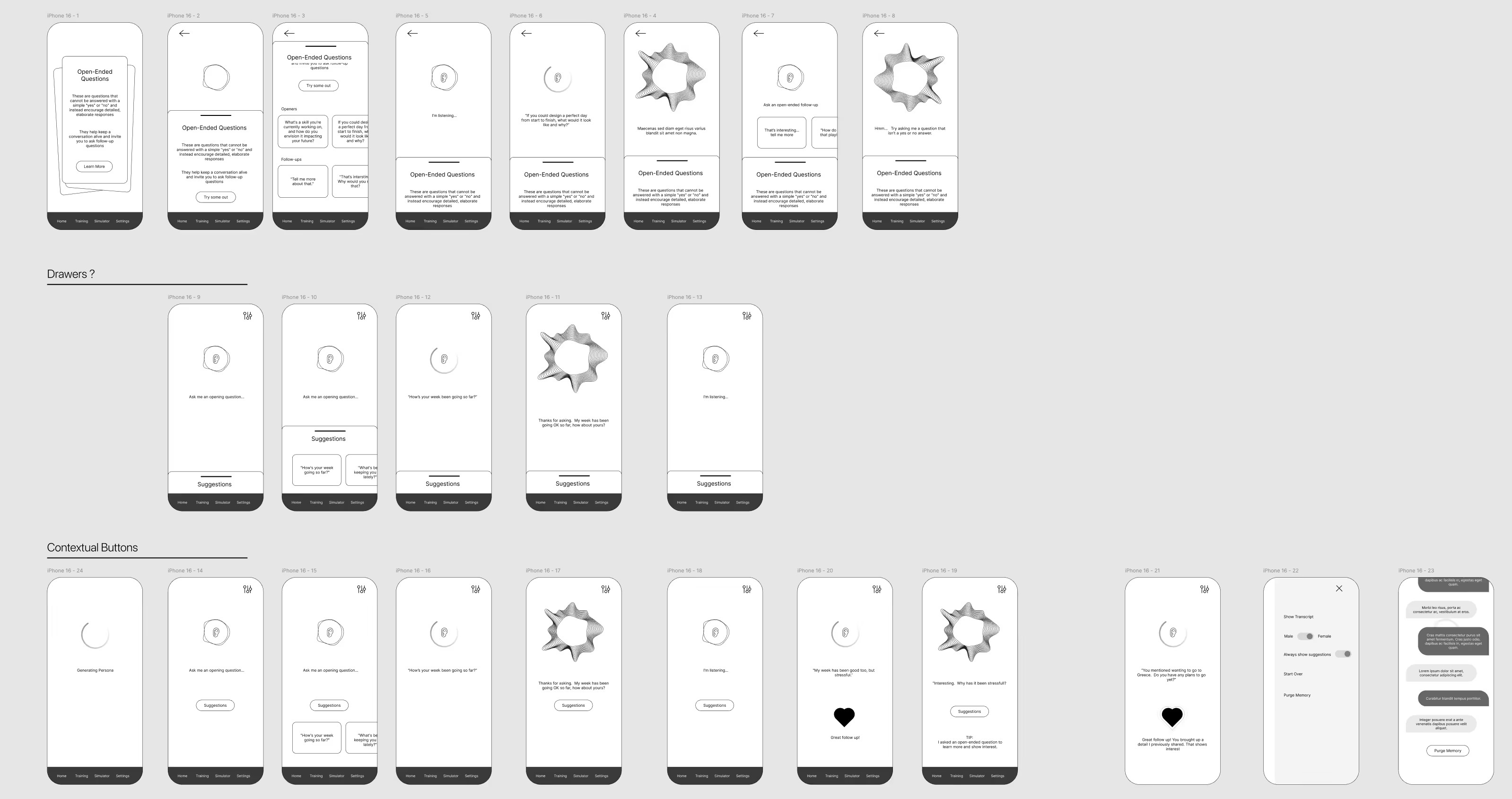
Brand
In Roman mythology, the owl of Minerva symbolizes wisdom, knowledge, and strategic thinking. This symbolism extends to the broader concept of philosophical understanding, where the "Owl of Minerva" signifies the ability to reflect on and understand the world. This dovetailed directly into the core purpose of the app; To provide wisdom and help people understand one another better.
The logo was built using the Golden Spiral to achieve harmonious proportions.

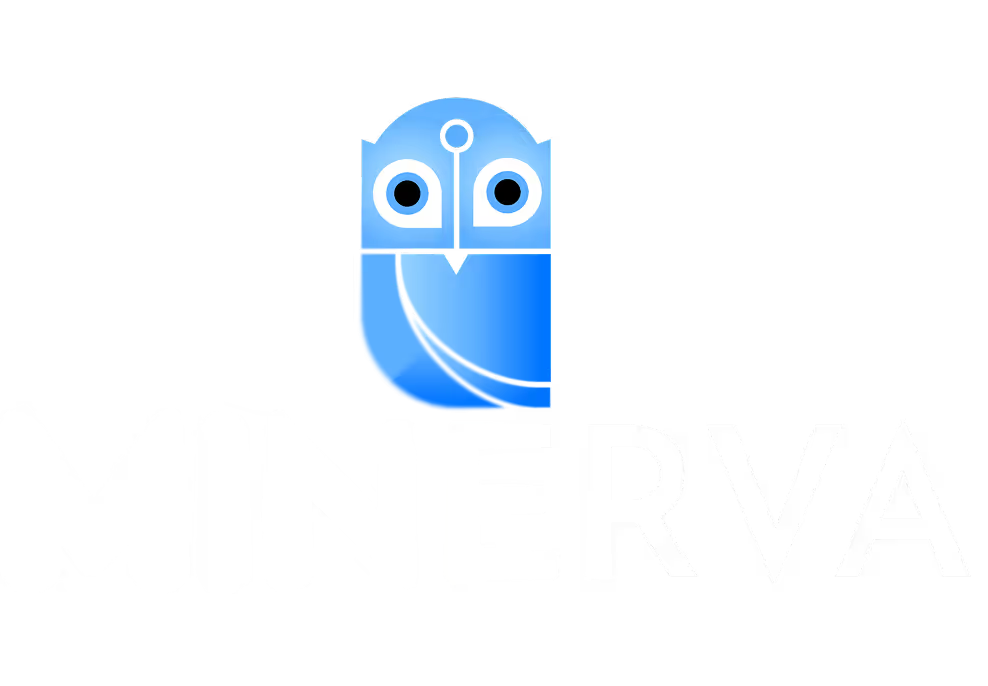
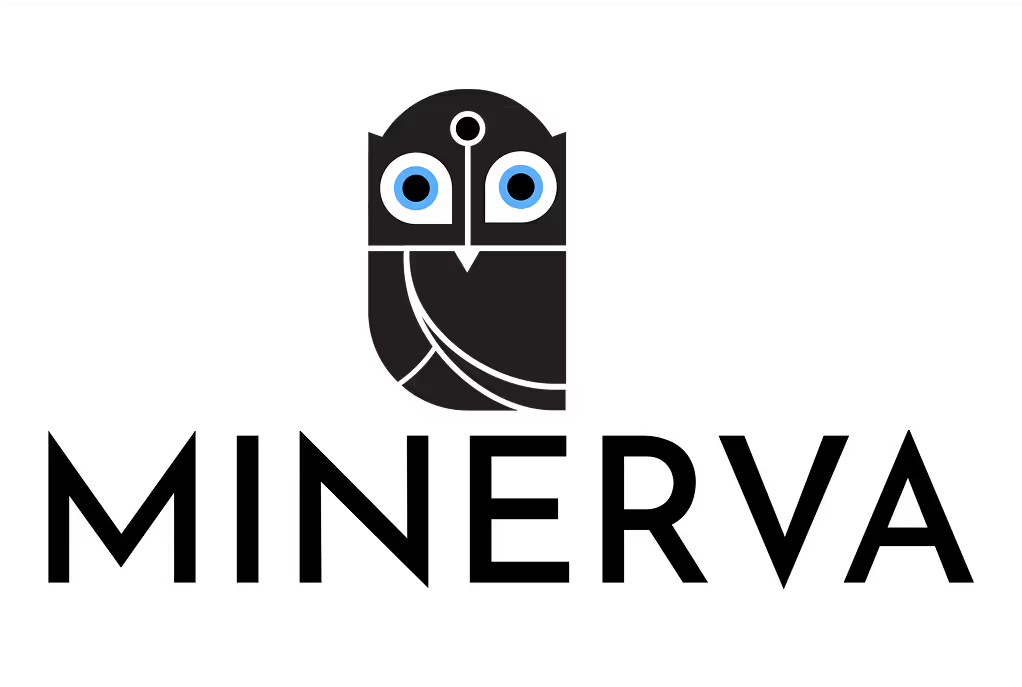
Vocal Visualizer
Central to Minerva is the vocal visualizer - a circular wave form that provides visual feedback as she is speaking.
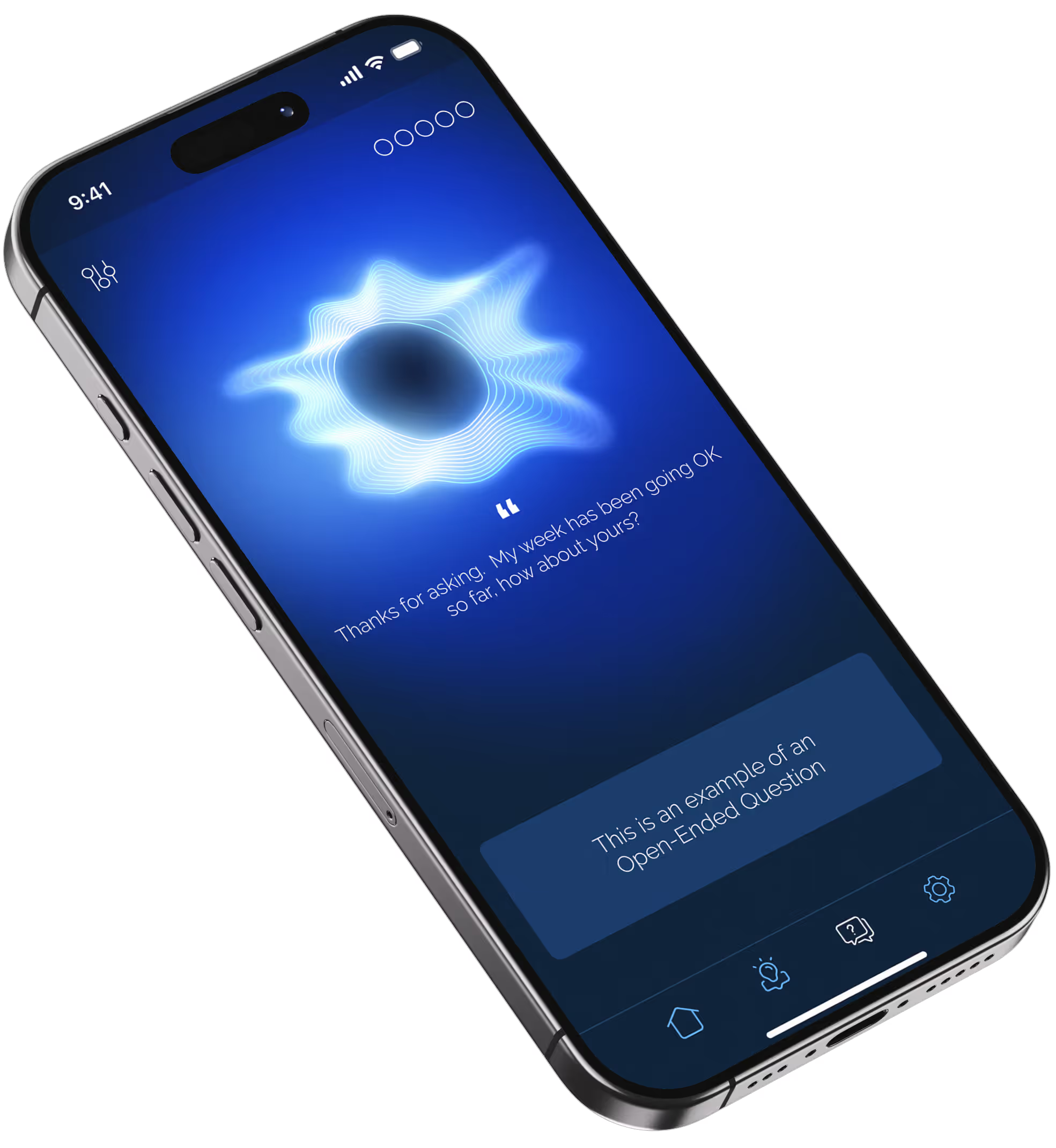

Design: Learning by Doing
The app focuses on two major components; a contextual digital mentor, and a nuanced conversational coach with customizable help settings.
Contextual Digital Mentor
A central part of Minerva is a contextual digital mentor. It offers education in an entertaining "learn with the flow" method. Users choose a subject to learn about and Minerva lays out information in an easy to discover fashion using drawers and contextual buttons for help with needed.
The app talks with users and helps them understand what good conversational tactics are and seizes upon "micro-learning moments" to help them learn as they go.
The app talks with users and helps them understand what good conversational tactics are and seizes upon "micro-learning moments" to help them learn as they go.
It provides guidance on topics such as:
- Active Listening
- Open-Ended Questions
- Finding Common Ground
- Curiosity and Genuine Interest
- Sharing Without Monopolizing
- Transitioning topics or ending the conversation

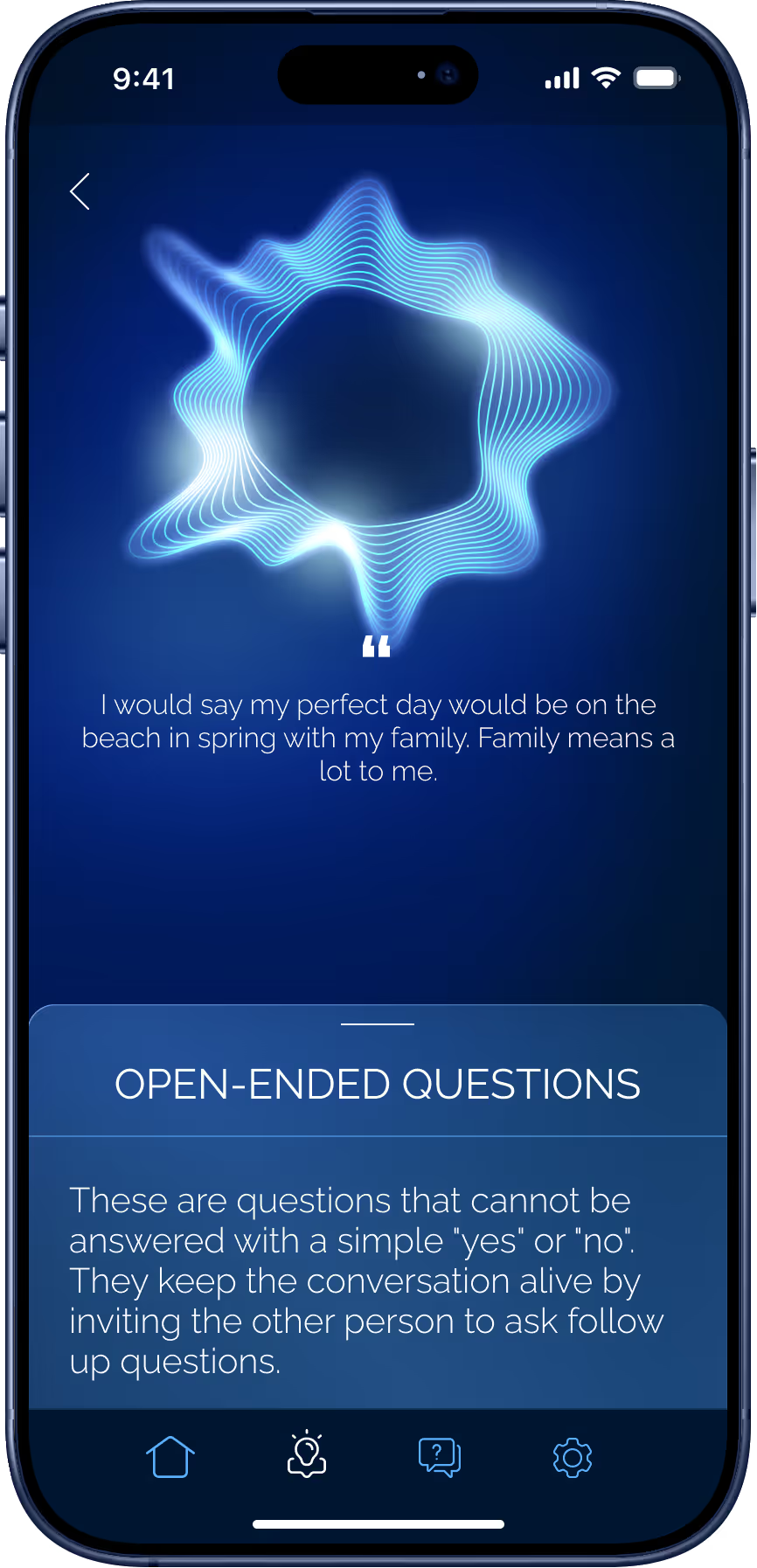

Micro Celebrations
In Mentor-Mode, Minerva would provide visual and haptic feedback when someone does something right by pulsing a warm color. This provides moments of delight and stimulates the desire to watch for visual cues from your conversational partner.
Nuanced Digital Coach
A commonly-requested feature by respondents was a safe space in which to practice their skills without judgement or social pressure. Minerva generates a persona to converse with replete with a backstory, secrets, challenges, defining childhood memories and many more facets for the user to discover.
By weaving these elements into the AI's persona, Minerva creates characters that feel more like real people, offering a richer and more authentic experience for users practicing their conversation skills.
By weaving these elements into the AI's persona, Minerva creates characters that feel more like real people, offering a richer and more authentic experience for users practicing their conversation skills.

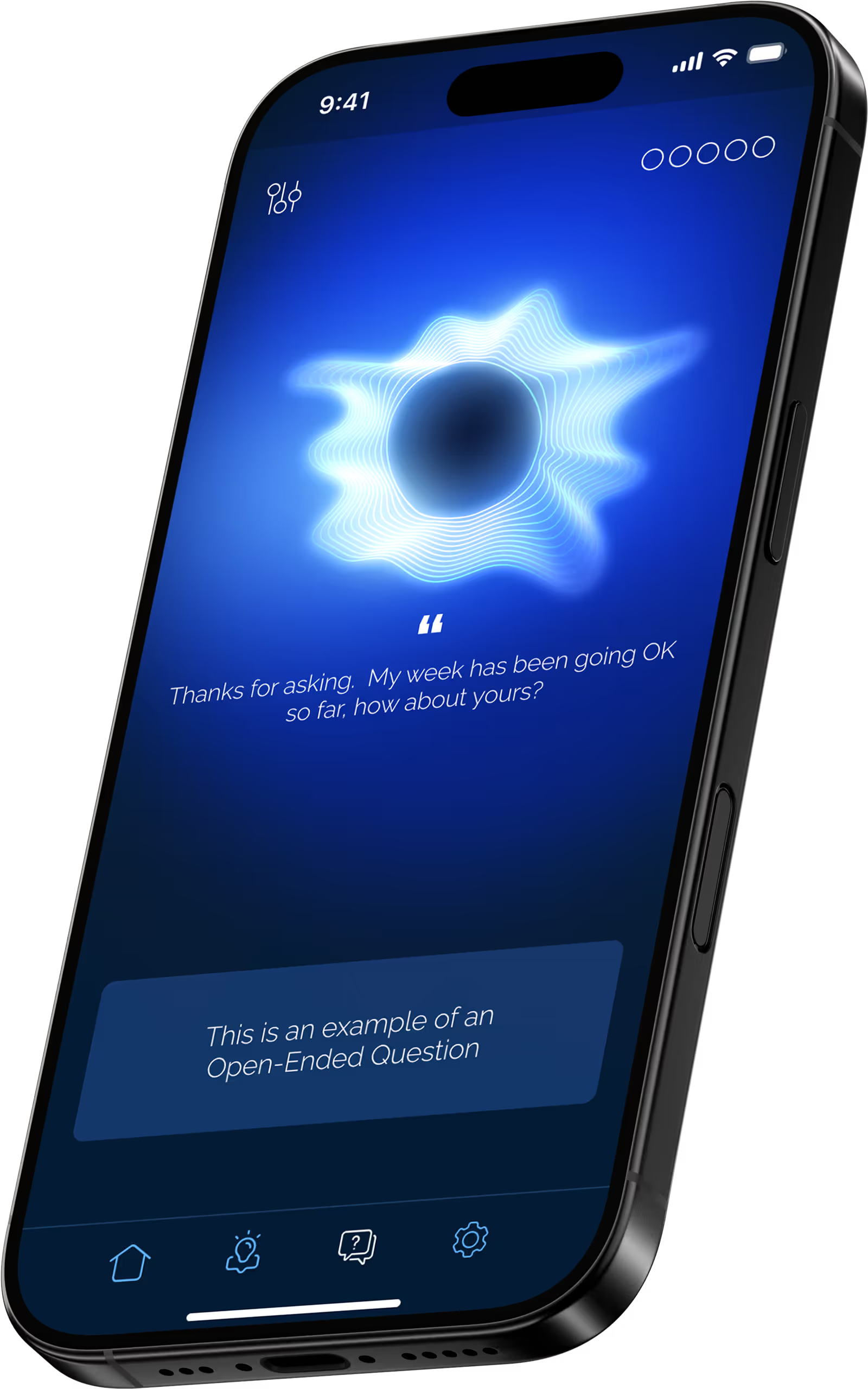
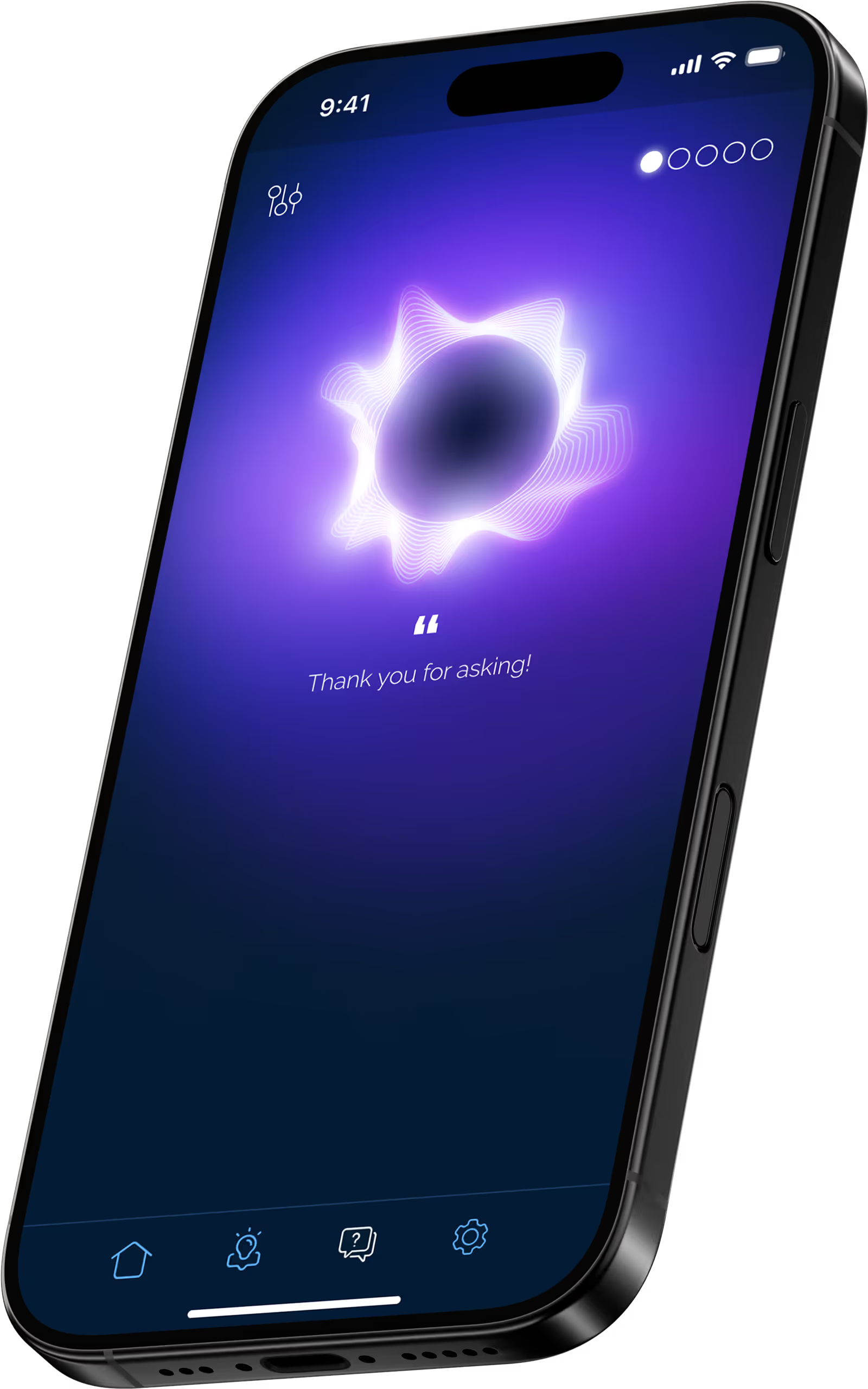
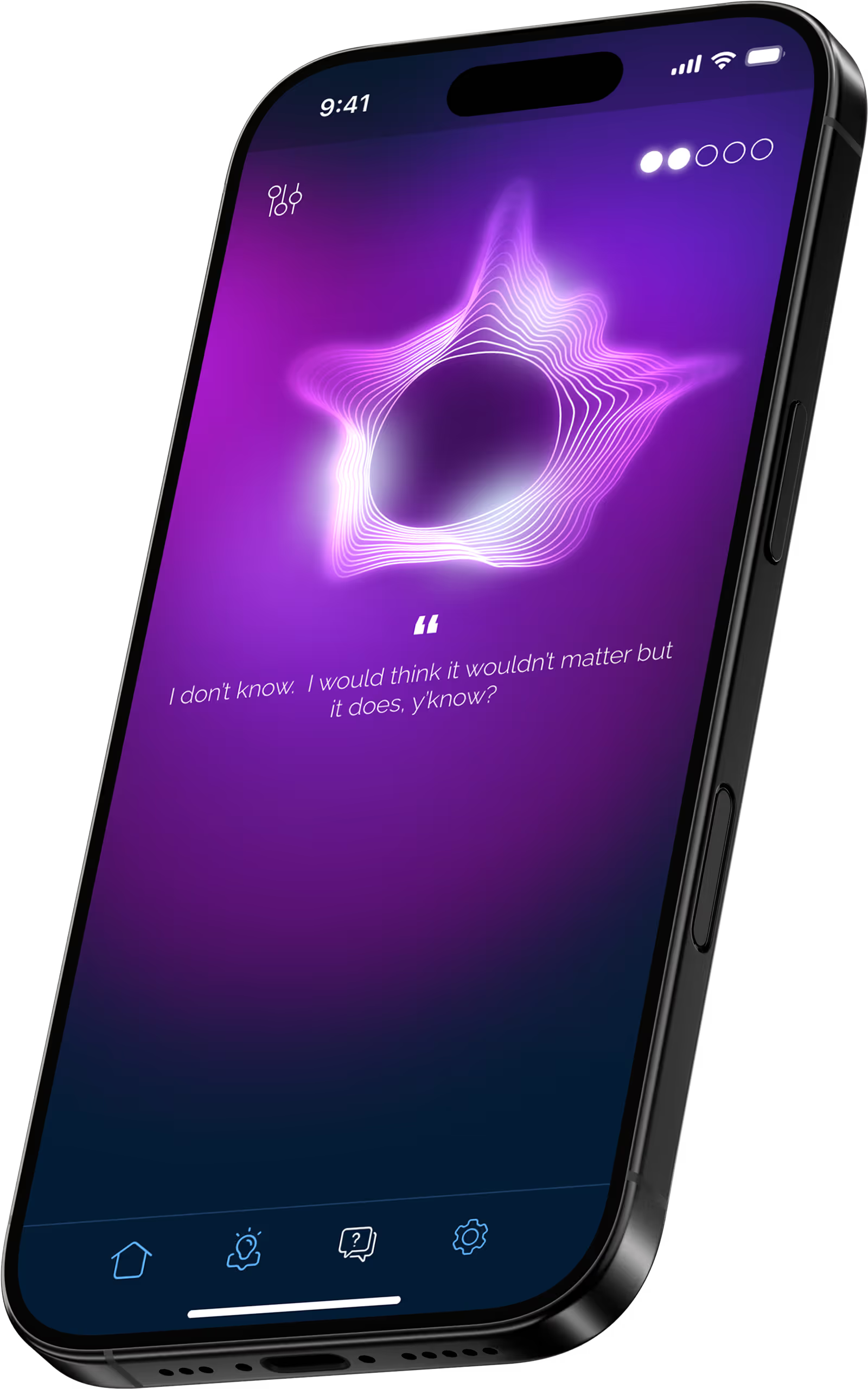
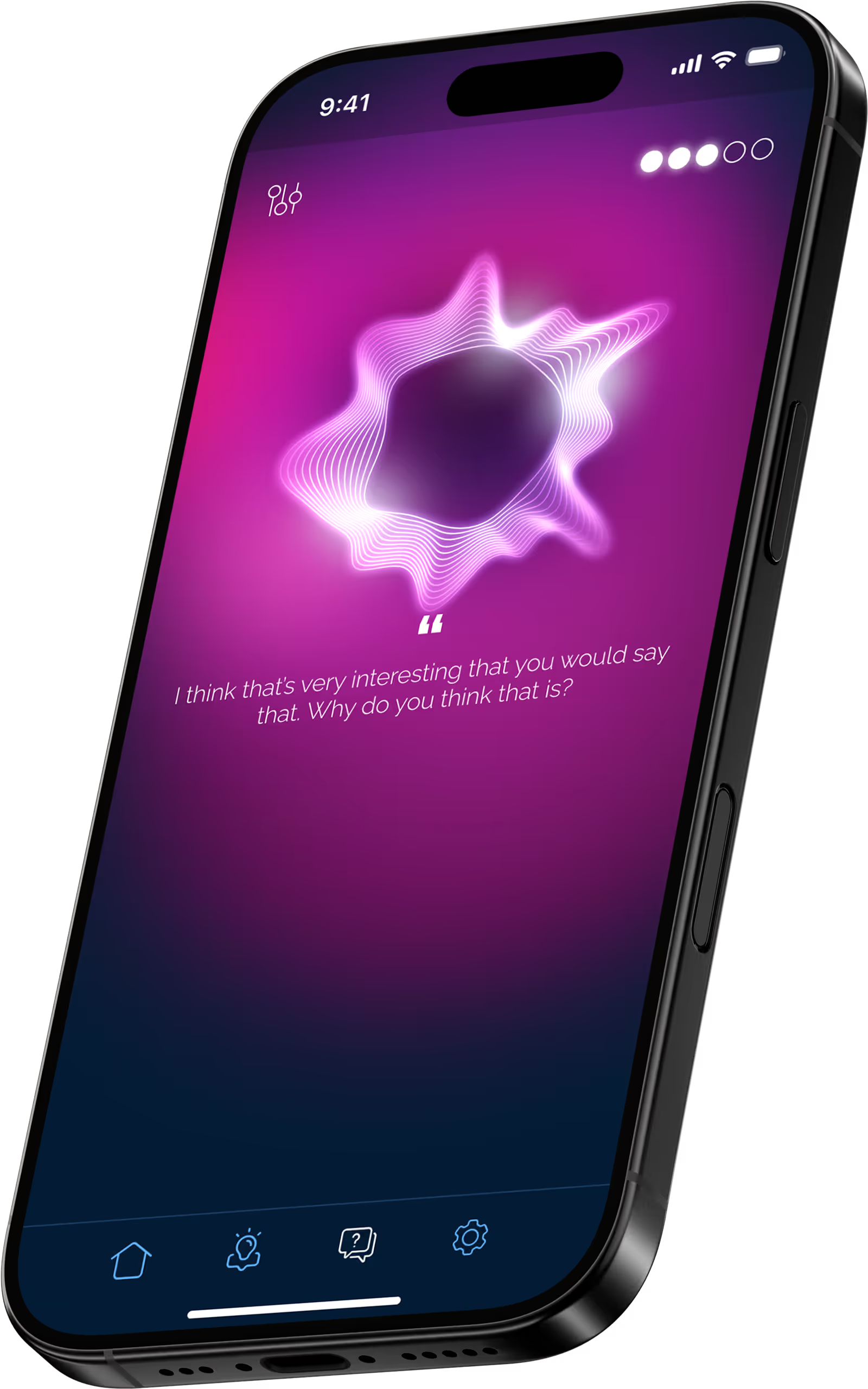
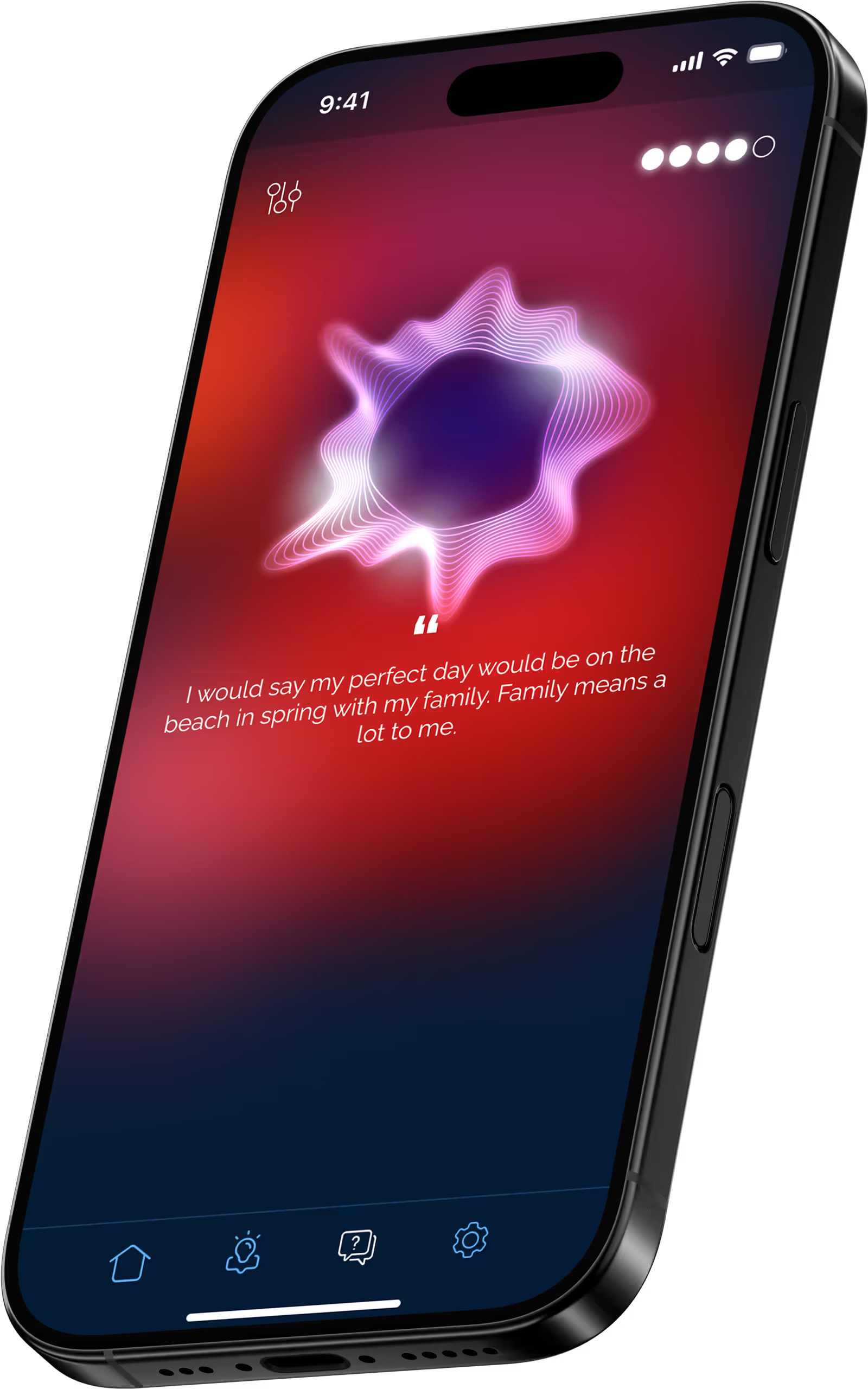
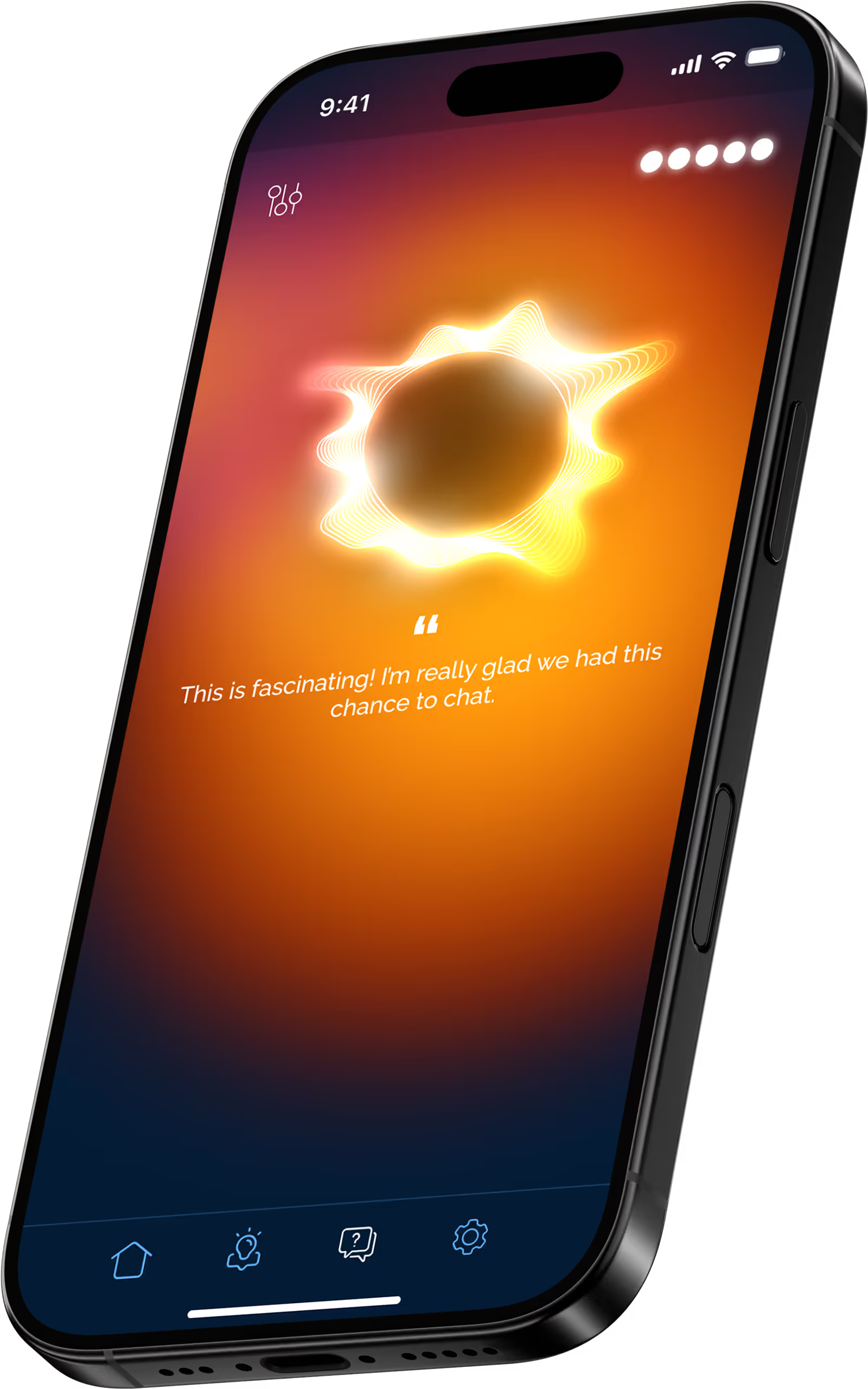
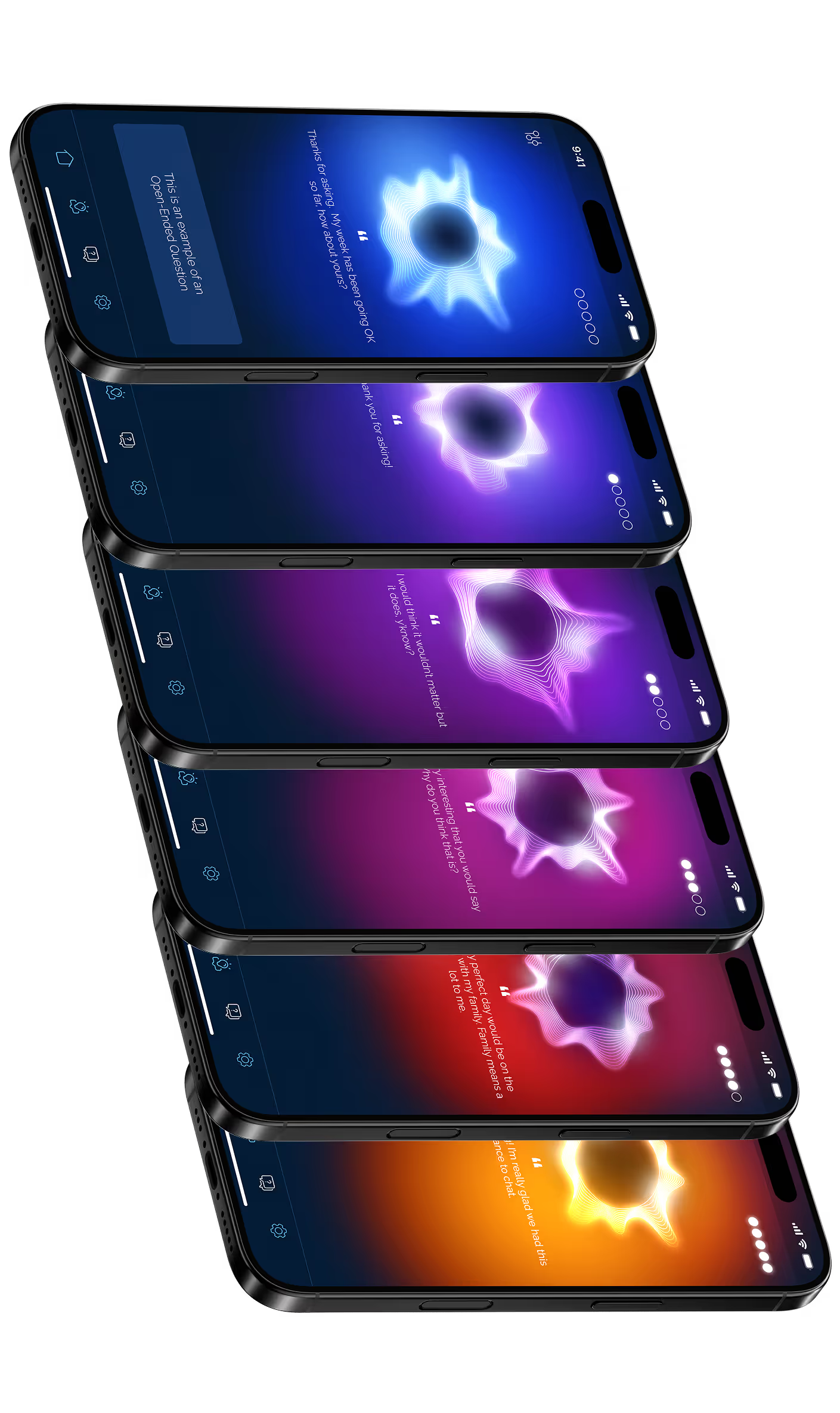
Tier progression
As you converse with Minerva, her display changes to indicate a growing level of engagement. The better you do, the higher tier you progress to and the interface warms up from blue to orange. If you disengage in conversation or practice close-ended tactics then the interface cools down again and the tier meter drops.
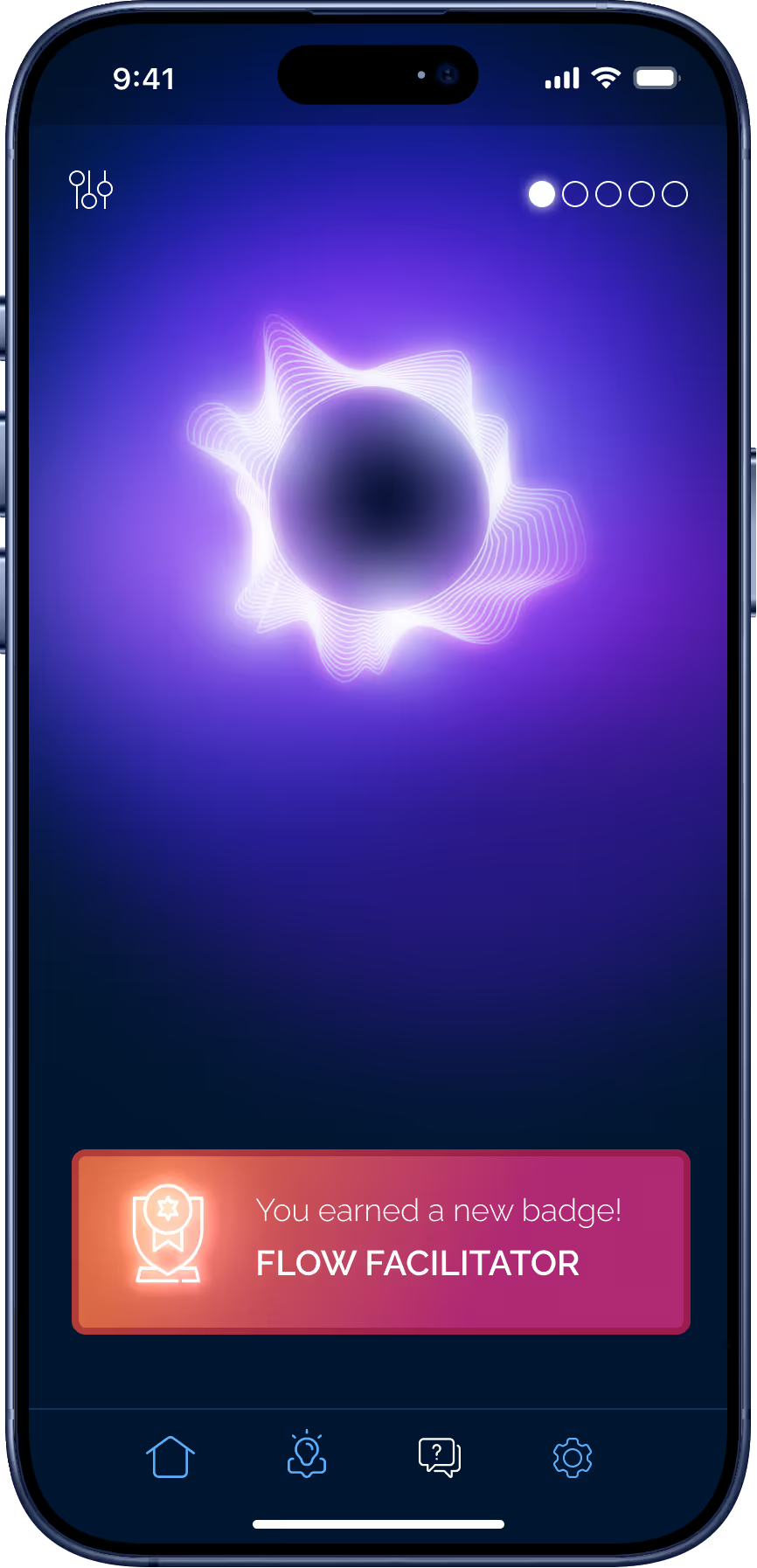
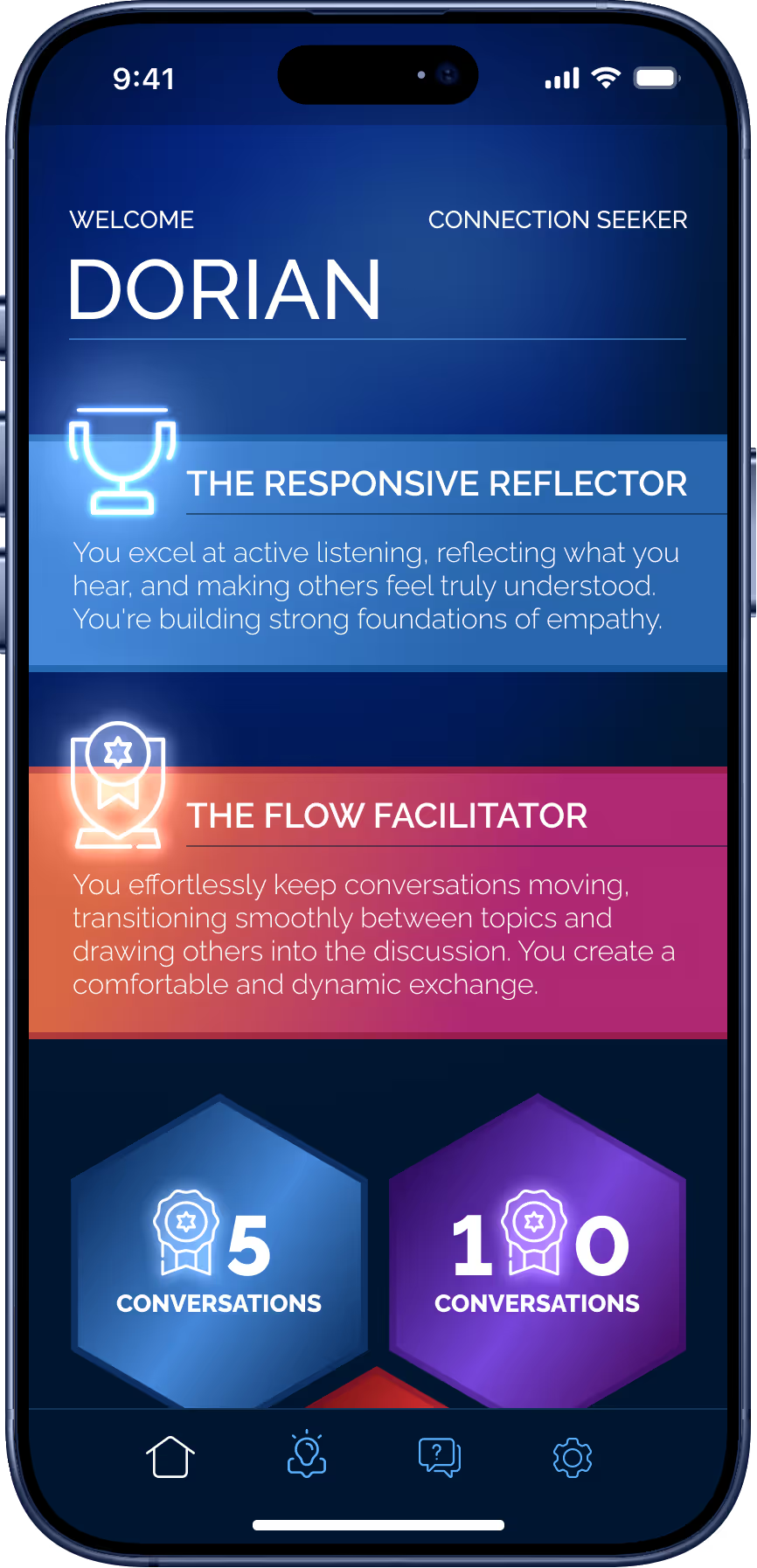
Gamification
As the user’s conversation progresses, the collect badges and a title adding to the excitement and a sense of tangible accomplishment throughout your journey.
Ethical AI
There were a lot of concerns about data and the ethical use of AI and data privacy to great care was taken at every step to mitigate these concerns.
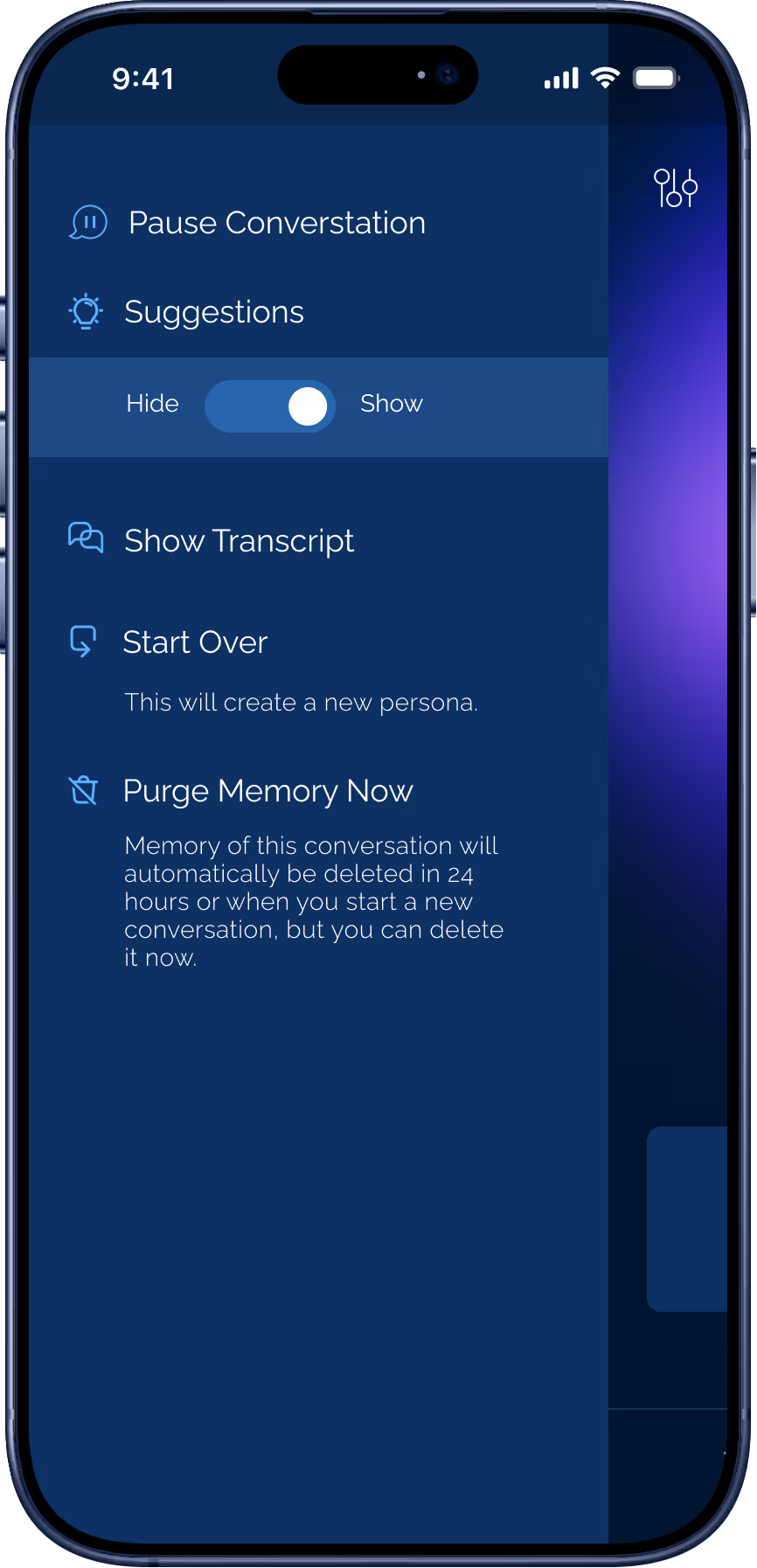



Conversations are auto-deleted in 24 hours
Users have clear controls to manually purge memory
Personas are dynamic and regenerate with every conversation keeping people from developing attachments
The LLM is trained to not lead on users
Play with the semi-functional prototype here:
Reflection
Centering humanity in AI
Designing Minerva was a profound challenge, pushing me to critically examine how a digital product could genuinely support the often-complex and emotionally nuanced act of face-to-face conversation. Unlike many apps that prioritize superficial interactions or gamified experiences, this project compelled me to focus squarely on human connection, specifically in the realm of real-world dialogue.
A particularly meaningful takeaway from this process was learning to integrate AI in a way that feels inherently ethical and transparent.
Rather than deploying AI to simply optimize engagement metrics or deliver generic responses, my focus was on how it could genuinely support users in building self-awareness regarding their communication habits, enhancing conversational clarity, and boosting their confidence in social settings. This meant crafting an AI mentor that guides, teaches, and encourages, always aiming to empower users to become more authentic and effective communicators in their everyday lives.
A particularly meaningful takeaway from this process was learning to integrate AI in a way that feels inherently ethical and transparent.
Rather than deploying AI to simply optimize engagement metrics or deliver generic responses, my focus was on how it could genuinely support users in building self-awareness regarding their communication habits, enhancing conversational clarity, and boosting their confidence in social settings. This meant crafting an AI mentor that guides, teaches, and encourages, always aiming to empower users to become more authentic and effective communicators in their everyday lives.
